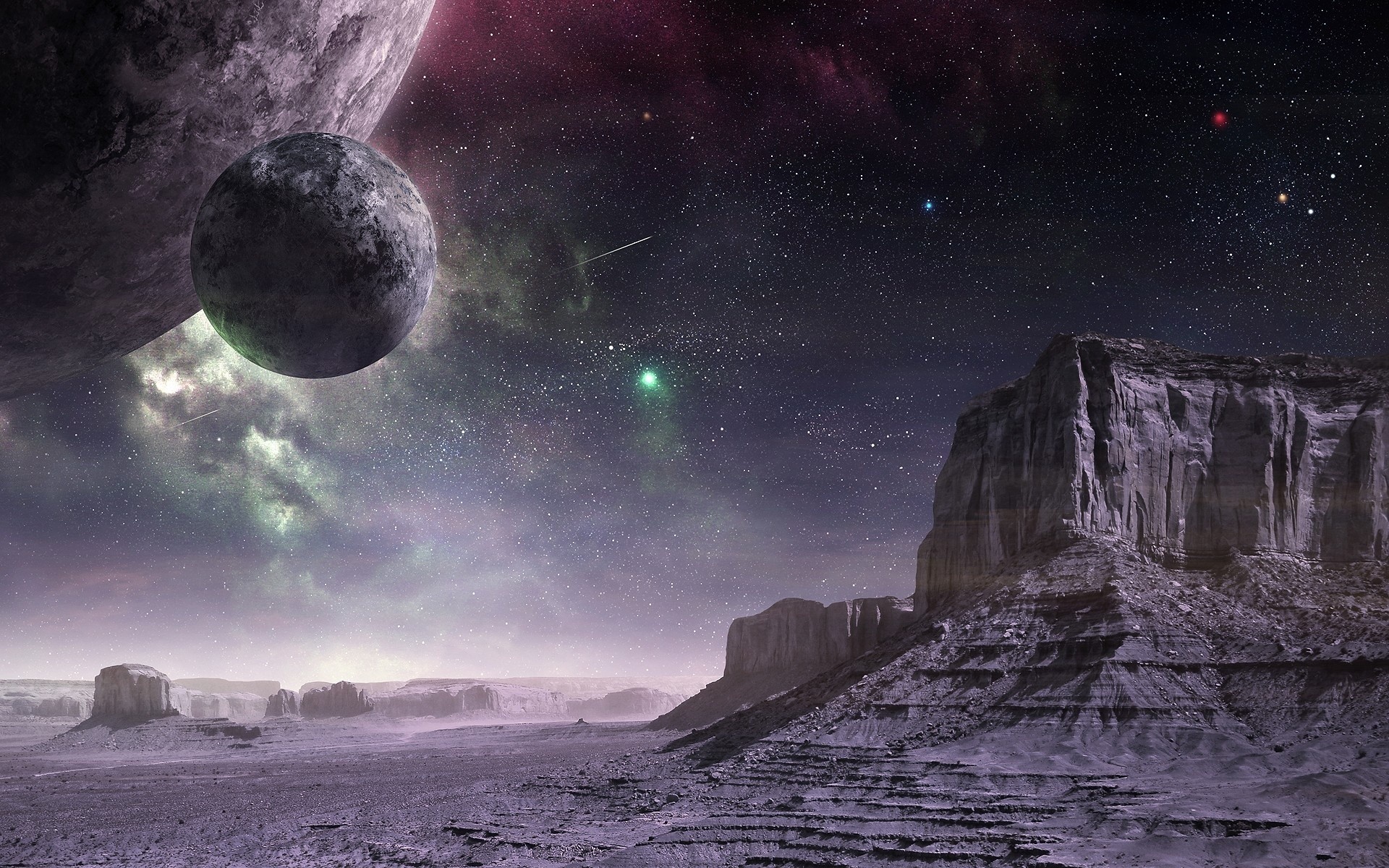
| Main | Neocene |

All pictures are taken from open sources and belong to their authors
Potentially habitable planets may be classified in two categories.
The first one should include worlds where there are conditions for water retention
in the liquid phase. And there is hardly any doubt that all bodies of this type
are inhabited. The geological record shows that life appears on Earth no more
than 200 million years after the appearance of the seas. Moreover, in the early
Archean, to the time of which the first biogenic deposits belong, life takes
on forms that are already rather developed and have reached the level of bacterial
communities. That is, it appears even earlier, and appears immediately – along
with liquid water. Therefore, the origin of life seems to be not an accident,
which implementation takes time, but a consistent pattern.
Also, there is no doubt that on “wet” planets life will be similar to Earth
one, both in terms of chemical basis and in terms of forms it takes. Carbon-based
life is the most obvious solution, the prerequisites for which in the form of
necessary chemical compounds are found even in intergalactic space. Next, it
is enough to recall the shark, tuna, ichthyosaur and dolphin, which look despite
the huge differences in origin and internal structure about the same – exactly
as dictated by considerations of expediency to a swimming predator in Earth-like
conditions.
...But the different question is if the liquid water is absent. In this case,
both analogies with the terrestrial biosphere and “carbon-based” chemistry are
not working. As a result, on the one hand, the very possibility of the appearance
of life is questionable, but on the other, if life appears, it will have to
be something alien, special and interesting.
Since water is one of the most popular compounds in the universe, it can be
absent on the planet only because the temperature is too high or too low. Moreover,
the first option causes little optimism – heat is the natural enemy of complex
compounds. Cold, on the contrary, contributes to chemical stability. As for
icy celestial bodies, on which oceans of liquid gases lap up, everything is
not so hopeless.
One of the solutions for the icy world has already been proposed in an article
about life on Titan: microorganisms representing droplets of phosphine that
do not freeze and do not dissolve in a medium of liquid methane. However, the
solution is not perfect. Droplets that retain their shape due to surface tension
forces are obviously not able to line up into a macroscopic “multicellular organism”.
Perhaps a more promising option is a cryochemical-based life. That is, with
processes capable of proceeding only at a temperature measured in tens degrees
Kelvin. On the one hand, cold slows down reactions, but on the other, even the
compounds extremely unstable under normal conditions acquire stability. Chemical
bonds, very weak and collapsing at room temperature simply by thermal motion,
begin to build atoms into complex structures.
The cryosynthesis-related hypotheses are too bold for science to assess their
plausibility at this stage. However, the realization of such a possibility will
inevitably give rise to such strange organisms that after meeting them, they
will hardly be immediately identified as live beings. Thermal motion of molecules,
being extremely slow in the cryogenic world, is also responsible for the rate
of metabolism. So, it will turn not only plants, but also animals into the likeness
of mineral formations, which mobility or growth can be noted only with prolonged
observation.
At the same time, giant or even supergiant size, having no analogues in the
“wet” worlds, may be the norm in the icy world – just because it will minimize
the loss of energy released in the body. The cryochemical “tree” will most likely
take the form of an ice floe drifting in a gas ocean, assimilating light with
its “deck” and dissolved materials with its “bottom”.
“Land” plants will be easier to identify. They will have to consist of ice,
but they will be given away by the movement of liquid gases (most likely, phosphine)
through the capillaries. After all, one way or another, life is a set of chemical
reactions that require a liquid medium to proceed.
Translated by Pavel Volkov, 2021
The original Russian article is here
| Main | Neocene |